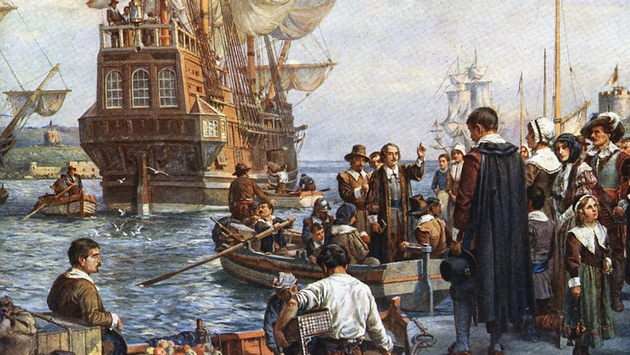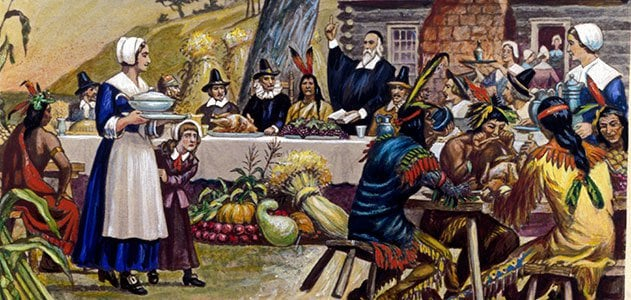Thanksgiving at Plymouth
In September 1620, a small ship called the Mayflower set sail from Plymouth, England, carrying 102 passengers: a mix of religious separatists looking for a new home where they could freely practice their faith and others drawn by the promise of prosperity and land ownership in the "New World." They anchored near the tip of Cape Cod, far north of their intended destination at the mouth of the Hudson River, after a treacherous and uncomfortable 66-day journey. One month later, the Mayflower sailed across Massachusetts Bay, where the Pilgrims, as they are now known, set about establishing a village at Plymouth.
The majority of the colonists remained on the ship during that first, dreadful winter, where they endured exposure, scurvy, and outbreaks of infectious diseases. Only fifty percent of the original Mayflower passengers and crew saw their first New England spring. The last of the settlers arrived on the shore in March, where they were greeted by a member of the Abenaki tribe who spoke to them in English.
A few days later, he returned with Squanto, a Pawtuxet tribesman who had been captured by an English sea captain and sold into slavery before escaping to London and making an exploratory trip back to his native land. Squanto instructed the Pilgrims, who were weak from illness and malnutrition, on how to grow corn, gather maple tree sap, catch fish in the rivers, and stay away from poisonous plants. The Wampanoag, a local tribe, and the settlers also formed an alliance, which lasted for more than 50 years and tragically is still one of the only instances of peace between European colonists and Native Americans.
After the Pilgrims' first successful corn harvest in November 1621, Governor William Bradford organized a celebratory feast and invited a group of the fledgling colony's Native American allies, including Wampanoag chief Massasoit. The three-day festival is now remembered as America's "first Thanksgiving," though the Pilgrims may not have used the term at the time.







